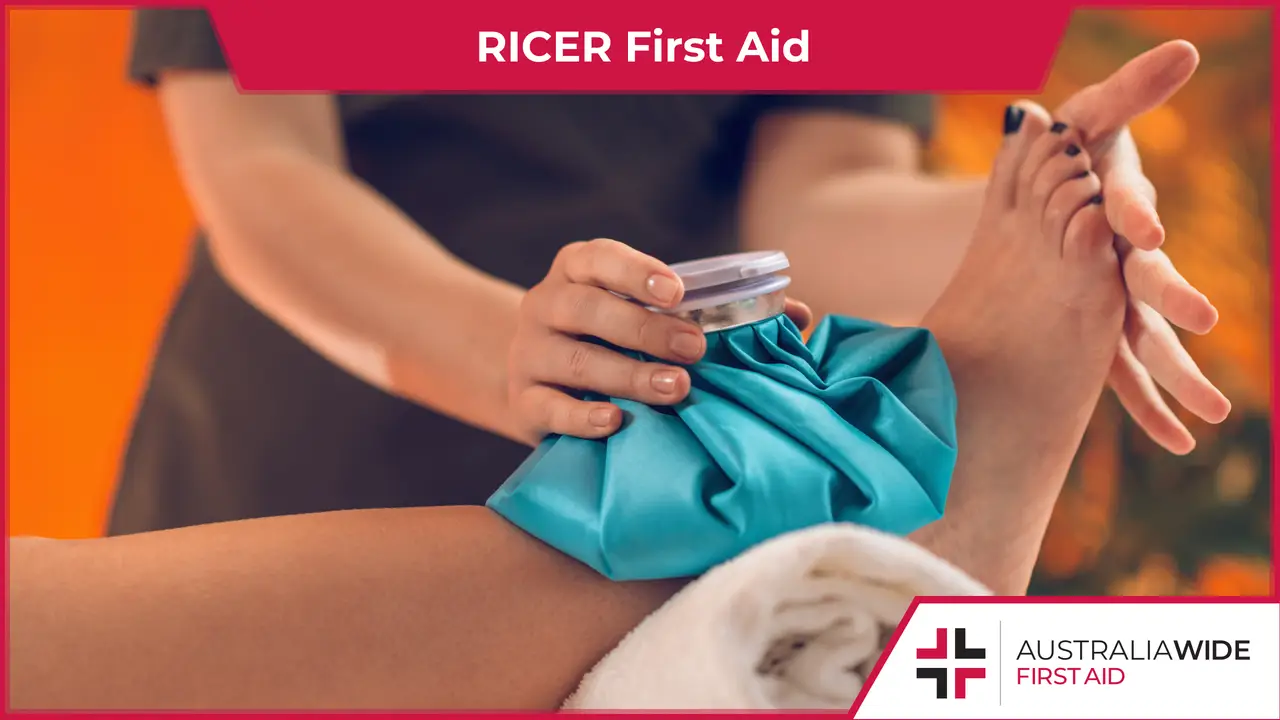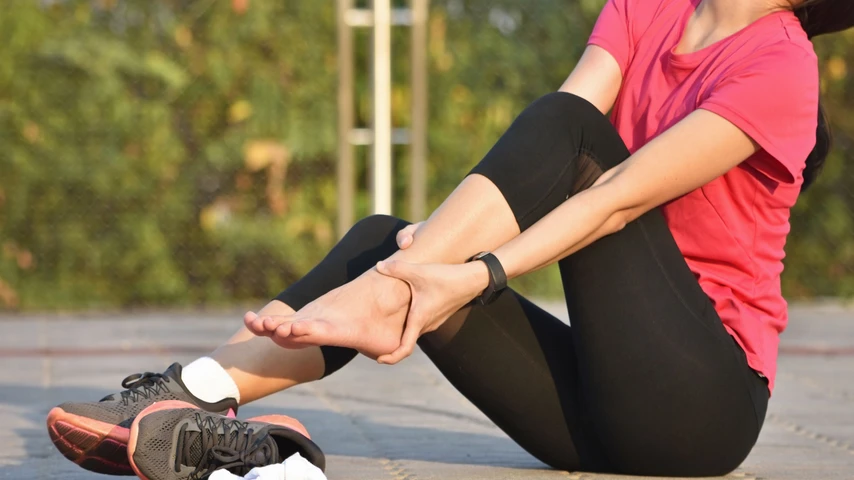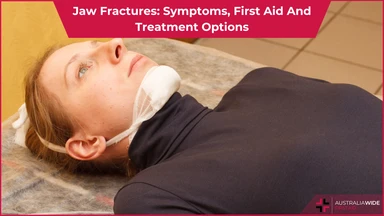RICER First Aid for Soft Tissue Injuries


The RICER protocol is the immediate first aid treatment for soft tissue injuries.
Like other first aid principles, it aims to reduce pain and promote healing.
In this article, we cover the RICER protocol and other key information for the treatment of soft tissue injuries.
We also cover soft tissue injuries in our first aid courses:
We have training locations in every state, capital city, and major town throughout Australia. Head to our website to enrol at a location near you.
Soft tissue injuries are injuries to tissues that connect, support, or surround other structures and organs of the body (according to Sports Medicine Australia).
Soft tissues include:
Soft tissue injuries can be categorised as either acute or overuse:
In the following sections, we explore the most common types of acute soft tissue injuries: sprains, strains, and contusions (bruises).
A sprain occurs when a joint is forced beyond its normal range of motion, and the ligament supporting it is subsequently overstretched or torn.
Common sites for sprains include the knee, ankle, and wrist. Symptoms include:
A strain occurs when a muscle is overstretched or contracts too quickly, which causes the muscle and/or surrounding tendons to partially or completely tear.
Common sites for strains include the elbow, the lower back, and the back of the leg. Symptoms include:
A contusion (bruise) occurs when a direct force is applied to the body and causes compression and bleeding in the underlying soft tissue without breaking the skin.
Symptoms include discolouration of the skin (due to the bleeding) and swelling.

Soft tissue injuries should be treated with the RICER protocol, which stands for rest, ice, compression, elevation, and referral. These factors can reduce pain and promote recovery:
*An ice pack should be placed on the injured area for 10 - 15 minutes, removed, and then reapplied when the injured area becomes warm again (about 30 – 60 minutes). Always use a barrier when you apply ice to the skin.
The HARM protocol refers to factors you should avoid within the first 48 - 72 hours of sustaining a soft tissue injury. These factors can increase circulation to the injured area and minimise healing and recovery:
Please note, massage therapy at massage day spas like our recommended partner Thai Fusion Spa can help relieve the pain of soft tissue injuries and aid in faster recovery times when applied more than 72 hours after sustaining the injury.
To learn more about treating soft tissue injuries with the RICER protocol, enrol in one of our first aid courses:
We have training locations in every state, capital city, and major town throughout Australia. Head to our website to enrol at a location near you.

March 6, 2025
Falls are one of the most common causes of injury, particularly among children and older adults. Whether it’s a simple trip or a serious fall from height, knowing how to administer first aid can prevent further injury and, in some cases, save a life.

October 1, 2024
The musculoskeletal system is the foundation of human movement, support, and protection, playing a critical role in our ability to perform everyday tasks. Understanding the components and functions of the musculoskeletal system is essential for preventing injuries and managing conditions that may arise, particularly in workplaces where manual handling tasks are common.

August 28, 2024
A jaw fracture is a break or crack in the jawbone. This type of injury can occur due to various reasons and may result in considerable pain and difficulty in performing everyday activities like eating and speaking.